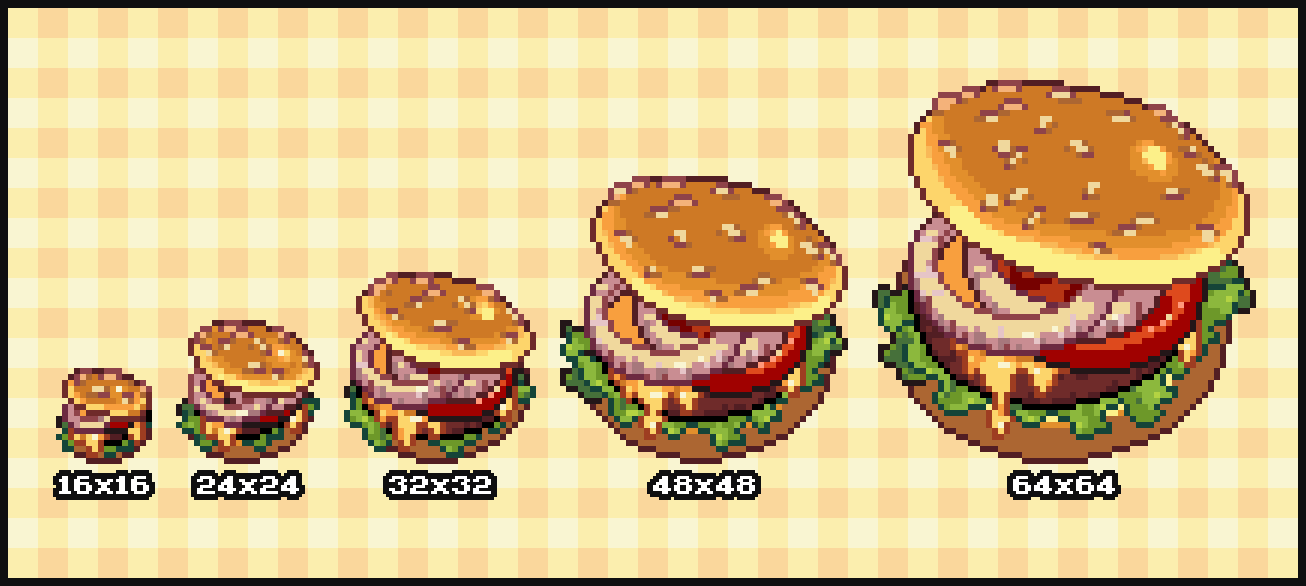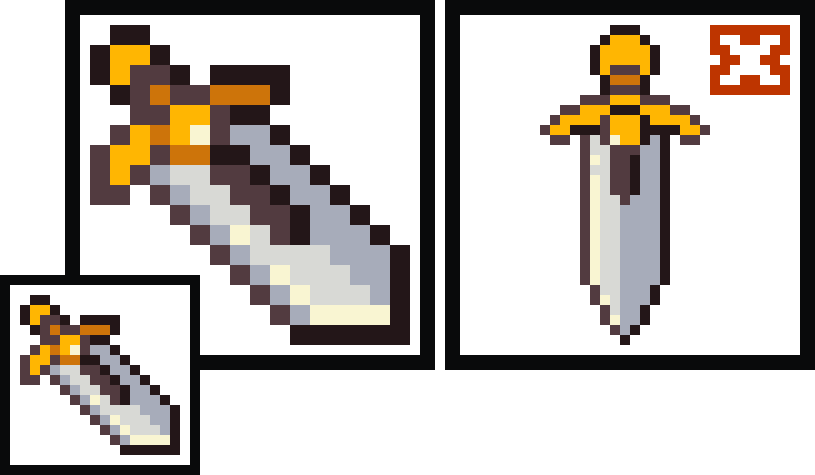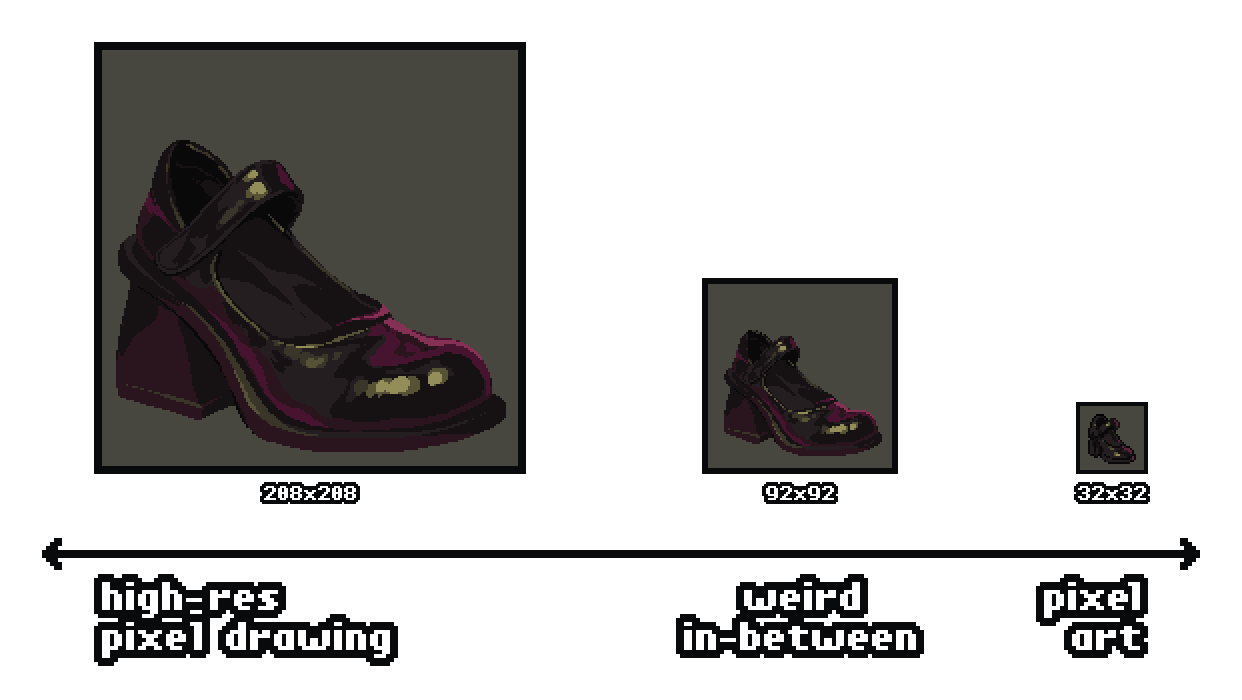Choosing the Right Resolution for your Pixel Art
Even—perhaps especially—when your pixel art is not encumbered by the requirements of a particular game or project, it is crucial that you select your resolution wisely. To figure out what size your sprite should be, you need to answer two questions:
- "What is the smallest necessary detail?"
- "How many pixels do I need to render this detail in the intended style?"
For characters, the smallest necessary detail will typically be facial features, especially the eyes. For other subject matter, this may be textural detail, like a blade of grass or a grain of rice, or small design elements like a lock on a treasure chest.
For some styles of pixel art, the absolute minimum number of pixels may be enough, but many styles will require more. However, bigger is usually not better. If you go any larger than is necessary for the style, you may be tempted to fill the extra space with noise, pillow shading, and other types of sloppy pixels.

Beginner pixel artists tend to use too many pixels—this often goes in tandem with the symbolic thinking indicative of a lack of traditional art principles, and a flat representation of the subject matter which this usually results in. Thoughtfully selecting the pose and perspective of a sprite can allow you to create more dimensional sprites with fewer pixels.

As always, good reference will help! Make note of other sprites which are similar to what you are aiming to create, and observe the sizes and proportions of relevant aspects (i.e. your smallest necessary details.) However, there will not be quality reference for everything you want to pixel—finding the right resolution for your piece may take some experimentation, and your pixelling intuition will improve with experience.
Although most pixel artists err on the side of excess, it is possible to select a resolution that is too small! If you’re going for a more evocative or sketchy style of pixel art (sort of like oekaki,) make sure your resolution is big enough (probably bigger than your initial inclination,) otherwise you may find yourself in an awkward in-between which isn’t quite "true" pixel art nor high-res pixel drawing. In pixel art, there should be intention behind every pixel, while in drawing there should be intention behind every stroke. Hcnone is a great example of an artist using high-resolution pixel art effectively.

Sometimes the only way to figure out which resolution is right is to try the wrong one (or a couple of wrong ones) first, but a good rule of thumb for most pixel art is "if in doubt, go smaller." For pixel drawing, the opposite is true. As your sense of personal creative vision strengthens with experience, you will better understand what the end goal is for each piece, and which choices—including the resolution—will help you get there.
Subscribe to Pixel Parmesan
Get the latest posts delivered right to your inbox